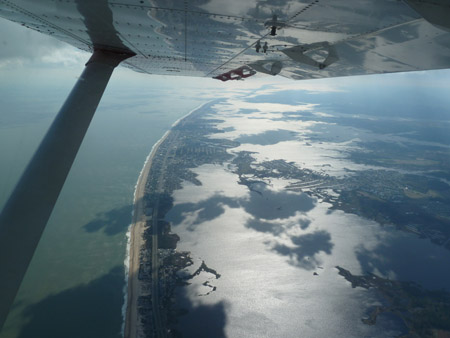
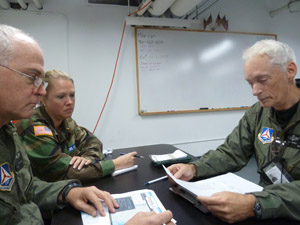
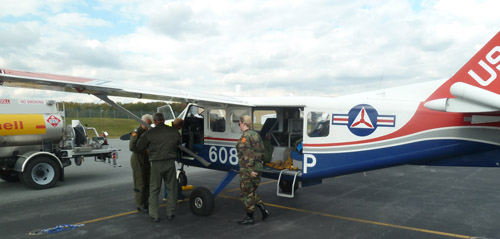
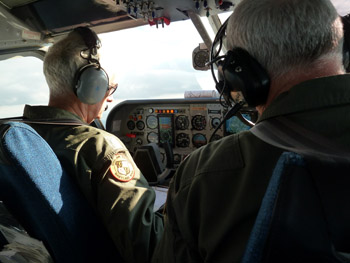
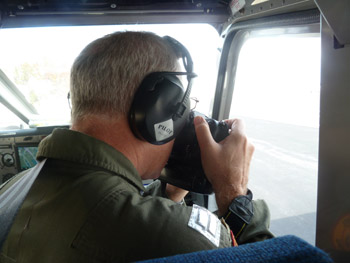
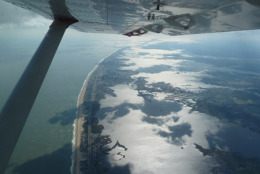
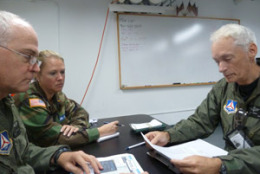
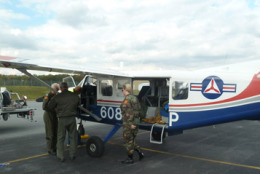
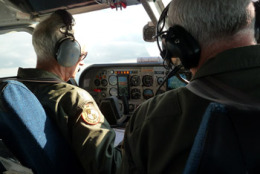
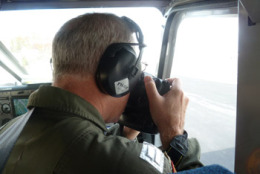
J.J. Green, wtop.com
MARTIN STATE AIRPORT, Md. – When disaster strikes in Maryland, whether its aviation- or storm-related, the Civil Air Patrol always gets a call.
And the aftermath of superstorm Sandy was no exception.
“I think it’s important for the public to know that the Civil Air Patrol does the vast majority of the search and rescue operations in the United States. And we have in this wing 1,600 and some volunteers that are very dedicated to serving the citizens of Maryland,” said Lt. Col. Bill Parris, a pilot with the Maryland Wing of the Civil Air Patrol (CAP).
“We see, based on what the Department of Defense and what the federal agencies are tasking us with, a big future for this type of mission in Civil Air Patrol,” Parris said during a break between flights over Maryland’s coastline Friday.
The object of Friday’s search was storm damage.
Co-pilot and photographer during the mission John Ralph said their goal was to photograph the general area. No specific sites were targeted.
“We were doing what I call ‘characterization’ photos so FEMA and other agencies could have an idea of what the ground truth is in those areas,” Ralph said. “We were photographing the entire Barrier Island, from Ocean City, down to Assateague, from the Delaware border down to the Virginia border.”
Public Affairs Officer 1st Lt. Tracy Urena, says CAP, which is the civilian branch of the U.S. Air Force, is familiar with responding to flooding.
“After Katrina, we were called up to help with that,” Urena said.
According to a press release from the Maryland Wing, the Air Force Rescue Coordination Center assigned the wing 30 missions in 2011. More than 800 members participated in these search and rescue missions. The wing’s 12 aircraft flew 140 sorties, a type of aviation mission, resulting in 13 finds and saving three lives.
In addition to the mission along the coastline, members have flown sorties over Western Maryland areas hard hit by snowfall from Sandy.
Soaring over the Chesapeake Bay, and its rivers and tributaries on a cool, partly cloudy and at times windy day, the team carefully followed safety protocols as it completed its task. Safety is a big part of what the organization strives to share in non-emergency times, Urena said.
Education is one of the Civil Air Patrol’s three missions, she said.
“We educate the public on flight — powered fight, glider flight and rockets. The second mission is emergency services and disaster relief. If a plane goes down, we have ground teams and air crews that can help with that,” Urena said.
The patrol also runs a cadet program that teaches 12- to 21-year-olds how to fly along with “moral leadership” and emergency services training, she said.
More information about the Maryland Civil Air Patrol is available here.
Follow J.J. and WTOP on Twitter.
(Copyright 2012 by WTOP. All Rights Reserved.)







